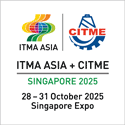Author: Md. Abu Sayem, President, Screen Printing Welfare Association (SPWA) and General Manager -Emblesement of Tropical Knitex Ltd.

Placement prints or engineered panels are a great way of controlling the position of a design for a specific product. The design is created to the scale of the product and, in contrast to a continually repeating seamless tile, when printed digitally, can be printed as strategically placed pattern pieces across the printable area of the fabric.
Q. How does placement printing reduce chemical consumption and wastage?
Abu Sayem: Well, we have to keep in mind that there is no way but to adapt to the technology. the textile industry, dyes & chemicals basically used in the dyeing & printing process.
As someone with expertise in placement printing, I have specific suggestions to reduce dye and chemical consumption in the process:
a) Have to select proper mesh count considering design effect. It is very important for print opacity.
b) Actual How many strokes are required to do a print and how many followed? More strokes mean more ink consumption.
c) Automatic emulsion coating systems can reduce photo-cure emulsion consumption.
d) Quality dyes-chemical can reduce ink consumption, if you use the best quality, ink then you will get the best opacity print.
2. Shortly we can say wastage means Unnecessary Consumption or Access after use. In the context of the environment, reducing wastage is a burning as well as challenging issue nowadays.
Here i have Some Points to follow in placement Printing that would help to reduce wastage-
a) You must establish and follow the recipe to prepare the bulk ink. Lots of factories in Bangladesh do not follow it. As a result, a huge amount of dyes-chemicals need to be disposed of as waste.
b) Prepare the bulk ink in smaller quantities, such as in 2 or 3 phases. If the entire amount is prepared at once, there is a higher chance of wastage.
c) If Possible substitute the dyes-chemicals. Category-wise, like class one, two, three, etc. Or hazardous-no hazardous. So that does not mix with each other.
d) In Bangladesh more than 80%. Printing Chemicals are water-based. So, during Production after a certain time, Printing Ink become dry through flash Curing heat. So, here once in a while it may be 1 or 2 hours after, we can dye load again the dry ink and reuse it.






